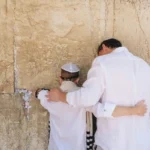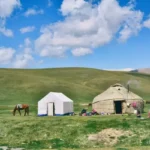The term “enclave” holds significant relevance within the sociological discourse, often employed to describe a distinct geographic or cultural space within a larger, dominant context. Sociologists have extensively studied enclaves to understand their formation, functions, and impacts on broader societal dynamics. This essay aims to outline and explain the concept of an enclave, exploring its definitions, types, and implications in various sociological contexts.
Defining Enclave
An enclave, in sociological terms, refers to a region or community that is culturally, ethnically, or socio-economically distinct from the larger surrounding area. These enclaves can manifest in urban or rural settings and may arise due to various factors, including migration, economic disparities, political pressures, or social networks. The defining characteristic of an enclave is its relative homogeneity compared to the heterogeneity of the surrounding environment.
Types of Enclaves
Sociologists categorize enclaves into several types based on their origins, functions, and characteristics. These types include ethnic enclaves, socio-economic enclaves, religious enclaves, and political enclaves.
1. Ethnic Enclaves
Ethnic enclaves are perhaps the most commonly studied form of enclave. These are areas where individuals from a particular ethnic group congregate, maintaining cultural practices, languages, and social networks distinct from the dominant society. Examples include Chinatown in San Francisco, Little Italy in New York, and various immigrant neighborhoods worldwide. Ethnic enclaves often provide a supportive environment for new immigrants, offering familiarity, social support, and economic opportunities within a culturally cohesive setting.
2. Socio-Economic Enclaves
Socio-economic enclaves are areas characterized by distinct economic conditions compared to their surroundings. These can include affluent gated communities, which are isolated from surrounding areas by wealth and resources, or impoverished neighborhoods where economic deprivation creates a separate social space. These enclaves highlight the socio-economic divides within societies, often perpetuating social inequalities through spatial segregation.
3. Religious Enclaves
Religious enclaves form when communities of shared faith congregate in specific areas, creating a religiously homogeneous environment. Examples include the Amish communities in the United States or certain districts in cities like Jerusalem. These enclaves allow individuals to practice their religion freely and maintain religious traditions, often insulated from the secular influences of the broader society.
Get the full article AD FREE. Join now for full access to all premium articles.
View Plans & Subscribe Already a member? Log in.














